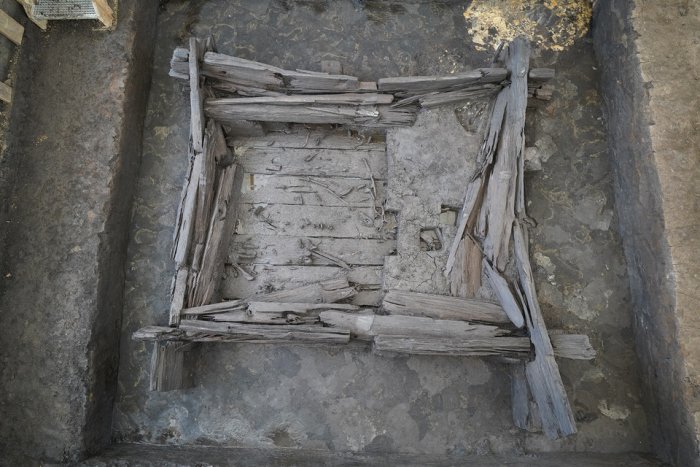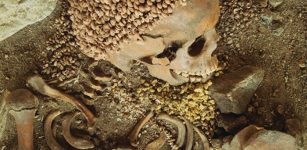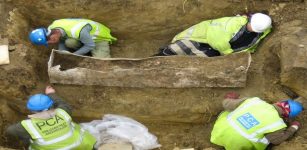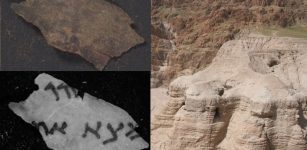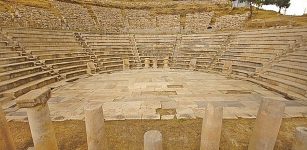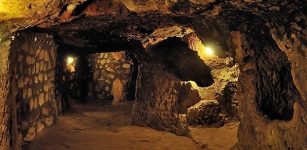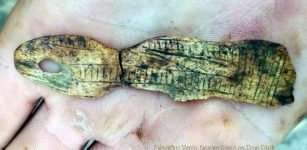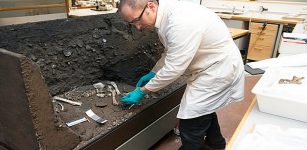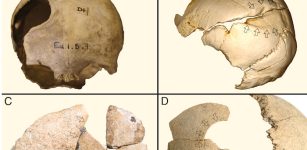Who Is Buried In The Extremely Well-Preserved 2,600-Year-Old Celtic Chamber Tomb Found Near Riedlingen, Germany?
Jan Bartek - AncientPages.com - During archaeological excavations in the Danube plain near Riedlingen, Germany, a burial chamber from the early Celtic period was uncovered.
This chamber is centrally located within a substantial burial mound, measuring 65 meters in diameter and currently standing just under 2 meters high, though it likely originally exceeded 6 meters in height. Such dimensions classify it among the select group of so-called princely burial mounds. These mounds were constructed by the Celts of southwest Germany for individuals of particularly high status between 620 and 450 B.C.
The burial mound is situated merely 7 kilometers northeast of Heuneburg, recognized as the oldest urban settlement north of the Alps and one of Central Europe's most significant archaeological sites. Equidistant lies Bussen, known as the "holy mountain of Upper Swabia," another notable site from both the Bronze and Iron Ages.
Professor Dr. Dirk Krausse's excavation team made a significant discovery at the center of the mound. Just 70 centimeters below the surface, they unexpectedly found an exceptionally well-preserved oak wood burial chamber. This chamber, oriented approximately north-south, measures about 3.40 meters in width and 4.05 meters in length. The floor comprises robust planks laid out north-south and remains remarkably well-preserved.
"The newly discovered burial chamber is an outstanding testimony to our rich monument landscape. It remains completely intact 2,600 years after it was created," said Andrea Lindlohr MdL, State Secretary in the Ministry for Regional Development and Housing Baden-Württemberg, at a press conference at the excavation site. "The archaeological heritage of Baden-Württemberg is impressive and provides insights into times and societies long past."
Credit: Landesamt für Denkmalpflege im Regierungspräsidium Stuttgart/Faber Courtial
The discovery is unique and of exceptional scientific significance because, under typical conditions, wood buried in the ground survives only for a few years or decades. Although wood was the primary building material during early Celtic times, such findings are rare in archaeology. A completely preserved Celtic burial chamber has been discovered only once before in Germany, in 1890 near Villingen in the Black Forest; regrettably, it was inadequately documented and only partially preserved later. This renders the recent discoveries at Riedlingen of a chamber grave—entirely intact with its ceiling, walls, and floor—all the more significant. The preservation is attributed to the site's distinctive hydrological conditions and oxygen exclusion due to groundwater and aquifers.
The ability to date the tomb precisely using dendrochronology (tree-ring chronology) because of this unique preservation is also of paramount scientific importance despite belonging to an era lacking written records. The dendrochronological analysis of recovered chamber timbers remains ongoing; however, a "club-like" wooden artifact left by Celtic builders post-construction has already been dated. This object—potentially a semi-finished wooden spade—was crafted from an oak tree felled in 585 B.C. These observations suggest that Riedlingen's princely tomb was constructed in 585 B.C. It predates by merely two years the grave of the Celtic princess from Bettelbühl (583 B.C), discovered recently at Heuneburg's base—a period marked by Heuneburg's flourishing clay brick architecture.
Most large burial mounds from the Celtic period were subjected to looting in subsequent centuries, and the tomb at Riedlingen is no exception. Tomb raiders accessed the site through tunnels, where archaeologists have now uncovered numerous decorative bronze nails. These discoveries support the hypothesis that the tomb was originally replete with offerings. The nails are believed to originate from a distinctive four-wheeled cart, akin to those found in other graves of Celtic elites.
Credit: Landesamt für Denkmalpflege im Regierungspräsidium Stuttgart/Faber Courtial
During the Celtic period, many large burial mounds were looted in later centuries, and the tomb at Riedlingen is a notable example. Tomb raiders accessed this site through tunnels, where archaeologists have recently discovered numerous decorative bronze nails. These findings support the theory that the tomb was originally filled with offerings. The nails are thought to come from a unique four-wheeled cart similar to those found in other graves of Celtic elites.
Credit: Landesamt für Denkmalpflege im Regierungspräsidium Stuttgart/Faber Courtial
Archaeologists believe that the raiders conducted an exhaustive search since no valuable items have been found on the chamber floor so far. However, as excavations continue, there remains a possibility of discovering items missed by these raiders, as noted in a press release.
See also: More Archaeology News
Further investigations and analyses after excavation are expected to yield significant insights into identifying the individual for whom this impressive burial mound was constructed, according to Dr. Roberto Tarpini (LAD), who is leading the on-site excavations.
Written by Jan Bartek - AncientPages.com Staff Writer


